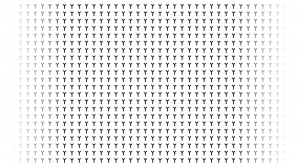One question tends to reoccur: How many antennas can a Massive MIMO base station usefully deploy? Current thinking for macro-cellular is that 100-200 antennas would be suitable. Will we in the future see a lot more, thousands or so?
In that application, I don’t think so. Here is why.
What ultimately limits Massive MIMO is mobility: no more than half of the coherence time-bandwidth product should be occupied by pilot transmission activities. (This is the “half and half rule”.) In macro-cellular at 3 GHz, with highway mobility we may have on the order of 200 kHz x 1 millisecond coherence; that is 200 samples. With pilot reuse of 3 (that practically does away with pilot contamination), we could, then ultimately learn the channel to some 30 simultaneously served terminals – assuming mutually orthogonal pilots. Once the number of base station antennas M reaches beyond twice this number, with some margin – say M=100, the spectral efficiency grows logarithmically with M. That means, even doubling M yields only a 3dB effective SINR increase, that is a single extra bit per second/Hz per terminal. Beyond M=100 or M=200, it may not be worth it. Multiple antennas are only truly useful if they are used to multiplex, and mobility limits the amount of multiplexing we can perform.
So why not quadruple the number of antennas for additional coverage? May not be worth it either. Going from M=200 to M=2000 gives 10 dB – that pays for a 75% range extension, or, alternatively, a tenth of the losses incurred by an energy-saving coated window glass.
In stationary environments, the story is different – a topic that we will be returning to.



